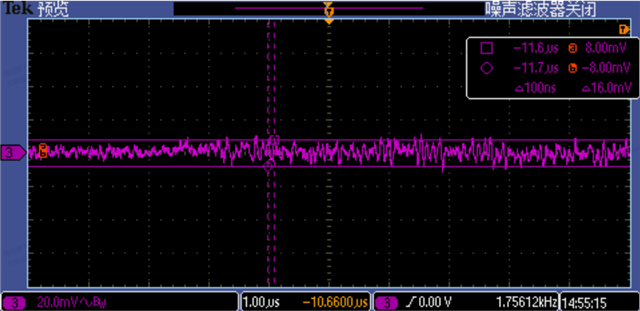Other Parts Discussed in Thread: AM3354, , AM3359
Hello,
Regarding the interim progress on the issue of serial port parity errors, based on the current test results, it appears that there is a high probability of a hardware problem. Following your previous suggestion, we have tested the parameters of the power supply as follows.
1. After checking the pins and principles, there is no power supply error in the power supply configuration of AM335X. The bypass capacitor settings are reasonable, theoretically there should be no power supply fluctuations. Below are the ripple tests for the 3.3V power supply to the UART of the CPU board and the VDDS power supply voltage to the IO area.
2.The PMIC output terminal has a ripple of 15.2mV for the 3.3V supply voltage.

3.The PMIC output terminal has a ripple of 15.2mV for the 1.8V supply voltage.

4.The MCU input terminal has a ripple of 16.0mV for the 1.8V decoupling capacitor.

Finally, may I ask for other possible reasons that may have caused this issue? Looking forward to your reply. Thank you!



